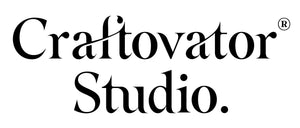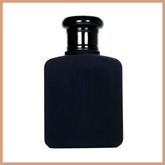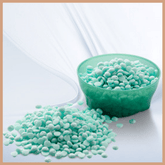The Ultimate Guide to Selling Your Handmade Candles and Wax Melts
If you’re a fellow crafter and you absolutely love making handmade wax melts and candles, it’s likely that the idea of selling your beautifully scented creations has crossed your mind.

Although these types of home fragrance products are bought pretty much all year around, if the seasonal holidays are coming up, it’s definitely all the more reason to start doing your research on how you can start selling as a small business whether online or face to face.
The laws and regulations relating to wax melts and candles are complex and technical and can appear daunting at first. However, every home fragrance making business owner needs to be aware of the laws and regulations in place which are ultimately there to protect your business as well as your customers.
As you’ll be selling your home fragrance products on a retail level, your local Trading Standards authority services will be the body you’ll be dealing with. It would be advisable to make a note of the Trading Standards office that is local to you.
You can find your local trading standards office here.
The current law that applies to the overall safety of goods is The General Product Safety Regulations 2005 (GPSR for short). There aren’t any specific laws that relate to just wax melts and candles, but there are some ‘European standards’ which give clear guidance on candle safety and are recommended to adhere to as they demonstrate ‘due diligence’ under the GPSR.
Once you get started, running your business is not as overwhelming as you might suspect. As long as you stay organised, pay careful attention to your accounts, make sure you’re abiding by specific candle making regulations and of course do your research beforehand, your experience should soon be plain sailing.
This article is a good checklist to ensure you’ve covered everything from making to testing to packaging, labelling to insurance and of course getting to the stage where you’re ready to start selling.
How Much Stock Should I Carry for My Candle or Wax Melt Business?
When you’re just starting out, it’s probably best you don’t have too much stock on hand. Simply because, at the very beginning, it’s extremely unlikely for you to be able to confidently know which candles or wax melts and which scents will be more popular.
Remember, you can’t judge your popular fragrances based on your own tastes and you may find that your customers favourites are the total opposites of what you like. Let your customers decide for you and after a decent time-period of selling, you’ll naturally know what sells best (and at what times of the year).
Since you’re not going to have a large supply of ready-made products initially, it would be advisable to let your customers know that your candles and wax melts will be ready on a made to order basis. Although it may take a little longer at first, don’t let this deter your customers. Instead, spin it around and take pride in taking time to produce bespoke, freshly made candles and wax melts with your high-quality supplies.
Why You Need Reliable Suppliers for your Candle or Wax Melt Business

Ensure you have enough equipment and supplies on hand to fulfil orders at a moment’s notice. Find a supplier you trust and be certain that you have everything you need to make anything you sell at any one time.
Pro Tip: Make sure you find a supplier you trust from the beginning. Building trust can take time and will be difficult when you’re just starting out in the candle making industry, so make sure you contact your suppliers beforehand enquiring about wholesale prices, shipping & delivery and how often they receive stock.
Have a good browse at what they offer – a good range of fragrance oils for example will in turn mean good news for you, as you too will be able to have an extensive range. One more thing – it may be worth ordering samples to test out quality.
Here at Craftovator, we pride ourselves on fantastic customer service as well as stocking over 500 amazing fragrance oils. Each fragrance oil is also available in 10ml or 50ml tester bottles so you can sample them before going on to purchase larger quantities. You’ll also find an array of high-quality supplies to help you on your candle and wax melt making journey.
The Importance of Designating a Workspace for Your Candle or Wax Melt Business
Running a business is a serious project and hopefully, you’ll experience “business boom” fairly quickly after setting up, with many orders flying in on a daily basis. What you don’t want however, after so much effort and hard work in building customer relationships and promotion, is to have problems fulfilling your orders.
You’ll definitely run into this issue if you’ve previously been making your wax melts and candles on the table in your dining room. It may sound ridiculous, and will most likely be overlooked in the beginning, but please do take this into consideration!
In order to stay as productive as possible, designate an area of your home strictly for work. No kids, pets, friends or family allowed. Creating a designated area solely for work will really help with not only focussing on strictly work, but also with keeping things tidy and organised.
The Importance of Testing Your Candle and Wax Melts

Before you start to think about selling your creations, you will need to ensure you have tested each fragrance oil thoroughly in your chosen wax. Testing wax melts and candles is essentially trialling the products yourself so that you can check how long the scent lasts for, how strong the scent is, how far around a room the scent projects and how long you get from a full bar or a pack of the wax melts you’ll be selling or if the wick you’ve used is working effectively.
When you’ve done this testing and of course made notes for future reference, you can then retest if necessary, using a different fragrance oil percentage or wick. Have you had repeated successful tests and now know how long your candles or wax melts last or how strong they are? You can add this information to your products listing on the selling platform you’ll be using once you’re set up.
If you’re not testing your products before selling, then you really can’t be sure if the wax melt or candle will last or even if it smells as it should. Leaving this up to the customer to decide may result in negative feedback or that customer not wanting to return to purchase more from you. It may also open up an array of safety issues that could prove fatal.
The best thing you can do with each fragrance oil is test, test, test and then test some more! You need to ensure that you’re completely happy with the fragrance oil percentage, wax type and wick used and this also shows that you understand the requirements for such testing and you’re ensuring due diligence is recognised into making sure your products are entirely safe to use.
How Should I Package My Candles and Wax Melts?

When thinking about packaging your wax melt creations, it’s worth bearing in mind which types are available to you. For example, if you have wax melt bars and these aren’t already in packaging such as a clam shell, then there are other packaging options such as polypropylene bags or glassine bags as an eco-friendlier alternative.
Both types come in an array of sizes to suit your needs. It’s also important to opt for a packaging type that won’t cause the fragrance to leach out of your melts such as cardboard or some types of plastic bags.
For candles, you may be looking to house your creations in a box adorned with your brand details to give a more luxury feel or you may opt for a dust cover or lid.
When choosing your packaging also think about your brand. What are your brands colours? Would you be happy to wrap each wax melt individually or use clam shells to save time? Do you have an eco-friendly ethos? Are you happy to use plastic? Would your customers not mind if you used plastic?
With eco-friendly and biodegradable products being at the top of most people’s lists nowadays, it’s worth making decisions based on this and appealing to customers who may not like using a lot of plastic from the very start. The good news is that we actually supply clam shells made from recycled plastic and offer a great selection of candle boxes and lids!
How to Label Your Candles and Wax Melts
Once you have your wax melt and candle packaging sorted, the next step is to label your products accordingly. The main label that needs adding to your products packaging is a CLP label. You’ll also need a CLP label on your candle glass regardless of if you’re using a box as well.
A CLP label is a legal requirement on all products that contain a hazardous substance such as fragrance oil. This label specifies any allergens the fragrance oil may present as well as any relevant warnings and precautionary statements plus pictograms if needed. This label also contains your details (name, address, contact number) so that should any issues arise, the customer or whoever has received your scented creations can easily get in touch with you should they feel it necessary.
Every fragrance oil you use will have its own CLP information. Sadly, there isn’t a universal CLP label as all fragrance oils contain different chemical compositions and as such, require their own individual labelling.
At Craftovator, we provide the CLP templates at 10% for all of our fragrance oils so you can make your own wax melt and candle CLP labels easily. If you didn’t want to make these yourself, there are professional label companies out there who can do this for you.
In addition to a CLP label, you may also add a logo sticker and any additional safety information. If you’re short on space with your packaging, you may combine the CLP and safety information into one label or add the safety information to a care card that’s sent along with your customers order. As long as all the relevant CLP information is there, you’re covered.
For more information on CLP labelling, check out our comprehensive guide here.
Can I Blend Fragrance Oils for My Candles and Wax Melts?
You may have been tempted with mixing fragrances together to create an entirely new scent. Maybe you’ve already found a new fragrance by blending your favourite scents.
Now, this is highly discouraged due to the requirements you’d need to adhere to in order to be able to sell your exclusive fragrance blend. You’ll essentially be creating a new chemical mixture which will need its own SDS and CLP documentation.
If you’re going to be selling this new fragrance blend in your wax melts or candles, you will need to ensure you have had the new blend correctly assessed/calculated by an industry professional which may cost you more than you expect.
Some vendors (incorrectly and illegally) just compile the different CLPs for their blended oils and list them together. This is highly inaccurate as the chemicals within the new blend will react differently when mixed together. If you then sell a blend in your wax melts or candles and your customer has a reaction or there was a safety issue with the oil blend used, then you would be liable, and this will cost you a lot of money in legal expenses.
If you are thinking about creating your own blends however, then we would advise that you look into the legalities thoroughly before you start trialling different fragrance combinations or proceeding further with making.
How to Set Costs for Your Candle or Wax Melt Business
A huge factor you need to take into account before you begin to sell your creations is to set your costings accordingly. You will need to work out the cost to make each bar, shaped wax melt or candle which means working out the amount of wax, fragrance oil, colouring, decoration, clam shell or other packaging and labels that make up that finished product.
For example, if you’re just starting out your costs may look like this example for wax melts in 50g clam shells using 8% fragrance oil:
25 x 5 Cavity Clamshells at £11.25 (11.25 / 25) = 45p per clamshell
1kg GoldenWax 494 Soy Wax at £5.05 (1000g / 5.05 = .00505/gm x 46g of wax per clamshell) = 23p per clamshell
100ml Fresh Unstoppable Fragrance Oil at £9.95 (100g / 9.95 = 10 x 4g FO per clamshell) = 40p per clamshell
25g Spring Green Biodegradable Glitter at £5.95 (£5.95 / 25g = 24p x 1g per clamshell) = 24p per clamshell
1 sheet of 24 CLP labels at 99p (99 / 24 = 4p per label for each clamshell) = 4p per clamshell
1 sheet of 35 logo labels at £1.99 (1.99 / 35 = 6p per label for each clamshell) = 6p per clamshell
Total cost per clam shell = £1.42
You may also want to include something for your time and for any of your overheads. These are hand-made products (not factory made) and you can charge for your time.
You would then need to work out your retail cost. Bear in mind that if you price too cheap, you may sell quite a few however, you’d not be making much of a profit. Sell too dear and you risk no sales at all. So a balance is definitely required.
It’s also totally normal to check out your competitors but a gentle reminder is to not get too hung up on what they charge. They may buy in bulk, which in turn keeps their making costs much lower, something you may think about doing as you progress further in your business, or you may have the outlay to buy in bulk from the offset.
The general rule of thumb (and one many vendors go by) is to sell at around 3-4 times your cost price. This would mean (not including any additional costs for your time or overheads) you’d price your wax melts at around £4.26 - £5.68 each giving you a profit of between £2.84 - £4.26 per wax melt clamshell sold.
It’s worth noting also that your prices will need to reflect the quality and presentation of your product based on the audience you’d like to sell to. High-quality images, additional or bespoke packaging, freebies or a high-quality website may mean you can charge more. Keeping things simple with minimal packaging or selling only via social media? You may not be able to charge as much but you'll also be reducing your costs.
There really is no right or wrong price, you just need to think ‘What is this worth?’ and ‘What would my target audience pay for this?’ and go from there. You can always adjust your pricing as time goes on.
If you’d eventually like to sell to retailers via wholesale, then this is usually around 2 times your cost price, so in our example above, you’d charge £2.84 per clamshell. This way you’re still making a profit from the sale of your wax melts, but you’d also have in place a minimum order quantity (MOQ) so that you’d be making more selling in bulk than you would selling to a single customer.
Most wholesalers will expect to pay around 50% of the retail price. Even if you won’t be considering wholesale to start with, you’ll want to take this into consideration for the future as it’ll be harder to raise your prices later down the line.
Although discounts are at your discretion, it may be worth offering a little discount when first starting out so that you can get your brand out there and into people’s homes. If not a discount, then maybe a little sample of another fragrance which they may come back to you to purchase.
Where Food Imitation Laws Come in

Technically, in the UK, if your wax melts or candles smell or look like food, then you should refrain from making and selling them.
For example, you have a cupcake shaped wax melt in a perfume inspired fragrance, this would be classed as food imitation as you have the food look. If you had a chocolate bar shaped wax melt in a cookie type scent that was coloured brown, this would also be classed as food imitation. If you made a candle in a latte glass that was brown on the bottom with a whipped type of wax on the top replicating this specific beverage, this would be classed as food imitation.
However, whilst we’re not legally allowed to say, ‘you can make food imitation products at your own risk’, there may be some leeway with how you package your wax melts specifically. Clamshells would be seen as acceptable as these are generally a little harder to open and don’t typically resemble food as much as resealable polypropylene or glassine bags.
Just a note though if you’re making snap bars: these can’t resemble the look of a chocolate bar at all so would need to be in bright, stand out colours as opposed to plain wax or brown. Adding glitter may be fine as long as the end product doesn’t look like any food type product.
Remember: The packaging doesn’t take away the regulations of making imitation food wax melts or candles. You should still refrain from making any wax melt shapes or candles that resemble food.
Trading Standards are quite hot on this right now so it’s advisable to check in with your local areas office and get their opinion on the matter before you start to sell or continue making.
They can also provide you with lots of further information that may be of great use to you. You may have seen other vendors making and selling food imitation products within the UK however, it doesn’t mean that it’s ok and its likely they haven’t thought about the possible safety issues that could arise from making such products.
Simply put, if it’s something that children or vulnerable adults could confuse with food and put in their mouth to eat, in turn causing significant injury or death, then it is prohibited under The Food Imitations (Safety) Regulations 1989.
You can view the full legislation document here.
Decide on Your Product Offerings
Devise a product list based on the items you already know how to make. We would advise that you don’t offer something brand new that you haven’t yet practised creating as this could lead to disastrous consequences which is why testing is so vitally important.
Only introduce new products when you are 100% confident with the finished result. Of course, every chandler knows that no two candles are the same and the art of creating candles and wax melts can take a very long time to perfect, but you’ll know what is worthy of being sold and what simply needs some more refining.
It’s also a great idea to consider offering candle-making accessories such as wax melt burners and candle accessories, products that don’t require as much time as your actual candles.
Do I Need Insurance for My Candle or Wax Melt Business?
Whether you sell your creations through your own website, through sites such as eBay, Etsy or Amazon or even at a Summer fayre, it’s important to make sure that you have craft insurance in place to cover your business against any unforeseen circumstances.
Whilst insurance isn’t mandatory, it’s highly recommend that you do have this in place. It costs very little per month to have your business insured and this then covers you for even the smallest of mishaps.
If you’re going to be attending fayres or markets, then the event organiser may even ask to see your public liability insurance documentation and take a copy, so it’s definitely worth looking into. You will likely be turned away from reputable markets if you’re unable to provide it.
Imagine this scenario: Your customer who has purchased a few times comes to you and states that the wax melt she was burning suddenly started popping and spitting in her burner and its caused damage to some furniture nearby. What would you do in this situation?
You may argue that you had a warning label and it was entirely their own fault. Regardless of whether that is true, the customer could take you to court and even if you are ruled to not be at fault, you will still have to pay the legal fees, which in some cases can be a substantial amount. That alone could ruin any chances of your small business continuing.
It really is important to make sure you are insured for obvious reasons. There are a fair few different insurance companies out there covering crafts such as wax melt and candle making so make sure you have a good look and ensure you have some type of insurance in place before you start trading.
I’m Ready to Start Selling Candles or Wax Melts – Now What?

Once you’ve done all the above and you’re more than happy with your creations, it’s time to get ready for selling. If selling from a physical shop is off the cards for the time being, then its highly advisable to set up an e-commerce website.
Having your own website is advisable as it's all your own, not subject to the high fees of some selling platforms or the risks that can come from relying solely on social media. If there was a glitch on Instagram and you lost all of your followers, what would that do to your business? It's best not to be reliant on someone else's platform entirely.
If you choose to set up a website, all you have to do is find an e-commerce platform that meets your needs and then get started setting up your business. There are a wealth of platforms available from Wix to Shopify to Woocommerce and Squarespace (and plenty of others!). Feeling overwhelmed at the options? There are plenty of industry professionals who can help and advise you. You’ll soon realise it’s not as hard as it looks!
Once you have your website, there are a few aspects you will need to adhere to in ensuring it is legitimate and in-keeping with selling regulations. You must declare your name, geographical address, email address, contact telephone number and VAT number (if you are VAT registered). This may be placed on the footer of the website so that it is easily accessible on every page your customers click onto.
As you will most likely be selling your products on your website, it is important to note that you will be entering into a ‘distance selling contracts’ with them. You will have to give at least a 14 day right to return the products as standard as well as supply pre-contract information which you can state on your websites Terms & Conditions.
Learn more about distance selling regulations here.
If for any reason you decide not to use a website when starting out and instead opt to sell via social media such as Facebook or other retail platforms, then the above still applies. To make sure you’re complying with regulations, your customers need to be able to have full access to details about your business.
Customers, by law, have the right to know who it is they are entering into a contract with. This is covered mainly by the Companies Act 2006 and for websites the e-commerce Regulations. You must provide the business name, legal ownership name and an address where legal documents can be sent. These requirements apply to receipts, invoices, orders and any business correspondence you send out such as emails.
This shouldn’t be something hidden away in small print and at the bottom of a random page, it should be extremely easy to find with just the click of a button or a simple scroll down the page. If customers are protected and have all the above information, it’s good news for you because it means they’ll be able to trust you and are more likely to buy your products.
As you can see, there are quite a few aspects to bear in mind before starting to even think about selling your wax melt and candle creations. These are vital components for you to put in place which will ensure you get the most from your business venture and will help you out greatly as you progress into offering a wider variety of products.








16 Comments
Hi, I’m looking into the insurance and was wondering if there is a company you would recommend?
Hi Lara, You should be able to use embellishments on your jars or caps but if they present a choking hazard then this would fall outside of any CLP or product safety warnings. I’d recommend speaking to your local Trading Standards office and they’ll be able to advise of any additional warnings you may need. Hope that helps, Kimberly – Craftovator
Hi there im thinking of adding a few emblisments to the jar lid or on the actual jar … is this OK or are there laws I need to be aware of .. ie declaration on the lable of a choking hazard?
Please advise x
Wow. Thank you so much for all this free information. Outstanding
Hi, I already sell my soy wax fragranced container candles at craft fairs, online and with a gallery. Now a restaurant want to sell some, having their logo added. Can anyone tell me if they as the vendor have to add VAT at his end? We’re trying to work out pricing.
Thank you, Sal
Leave a comment
All blog comments are checked prior to publishing